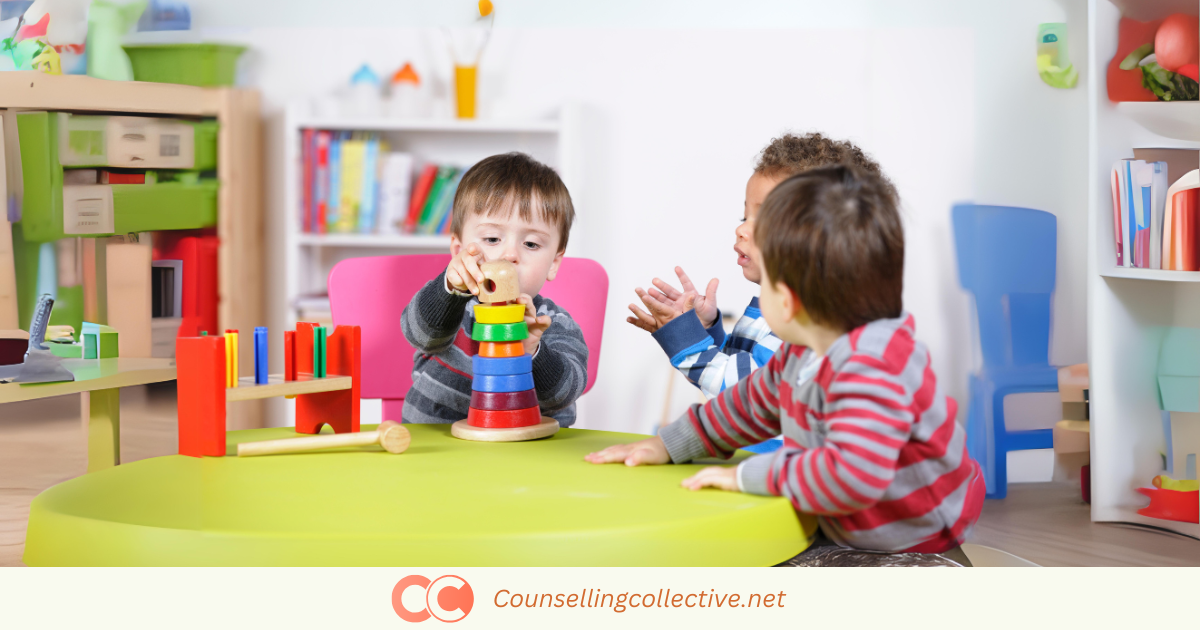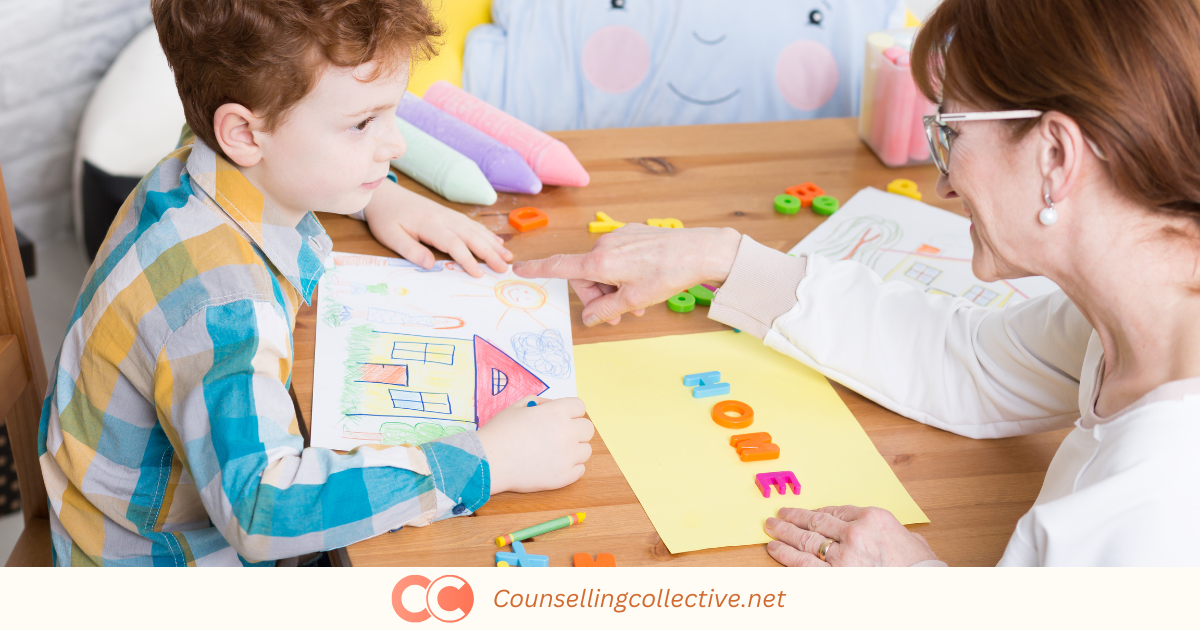Contents
Introduction

Person-Centered Therapy: Techniques, Applications, and Effectiveness
Person-Centered Therapy, is a type of talk therapy that focuses on creating a supportive and non-judgmental environment for clients. The approach emphasizes understanding and accepting clients’ feelings and experiences from their own perspective. By fostering a strong therapeutic relationship and encouraging self-exploration, this therapy aims to help individuals gain insight, build self-esteem, and achieve personal growth.
This article will provide an overview of Person-Centered Therapy, including its core principles, unique techniques, and applications in treating various mental health conditions. We will also discuss the criticisms and limitations of this approach and its relevance and effectiveness as a therapeutic option.
What is Person-Centered Therapy?
Person-Centered Therapy, also known as Client-Centered Therapy, is a humanistic approach to psychotherapy developed by Carl Rogers. This therapeutic model emphasizes the crucial role of the therapeutic relationship and the belief in each individual’s inherent capacity for personal growth and self-actualization. It is based on the principle that people have the internal resources and potential needed to resolve their own problems and achieve a higher level of self-understanding.
In Person-Centered Therapy, the therapist provides a supportive and non-judgmental environment that encourages clients to freely explore their thoughts, feelings, and experiences. The therapist offers genuine empathy, unconditional positive regard, and congruence, which are essential for fostering a trusting and open therapeutic relationship.
Why Person-Centered Therapy is Important?
It is important because it offers a strong framework for understanding and facilitating personal growth and self-understanding. At its core, it underscores the necessity of creating a therapeutic environment that is supportive, empathetic, and free from judgment. In such an environment, clients feel genuinely valued and understood, which is crucial for effective therapy.
This approach empowers clients to delve deeply into their own experiences and emotions, promoting greater self-awareness and self-acceptance. By emphasizing the therapeutic relationship, Person-Centered allows clients to explore their inner world at their own pace, fostering personal development and growth.
Understanding How Person-Centered Therapy Works
Person-Centered Therapy works by creating a therapeutic environment characterized by empathy, acceptance, and authenticity. In this supportive setting, clients are encouraged to explore their inner experiences and emotions without fear of judgment. The therapist’s role is to facilitate this exploration by providing unconditional positive regard, empathic understanding, and genuine feedback. Through this process, Person’s develop greater self-awareness, self-acceptance, and personal growth, ultimately leading to improved psychological well-being.
We will break down our exploration of Person-Centered Therapy into three distinct phases: an overview of its central ideas, a detailed analysis of its therapeutic techniques, and a review of its applicability to various mental health conditions.
Simple Overview
Core Idea: Person-Centered Therapy focuses on creating a supportive and non-judgmental therapeutic relationship to facilitate self-exploration and personal growth. By fostering an environment of empathy, congruence, and unconditional positive regard, the therapy encourages clients to explore their own feelings and experiences, leading to greater self-awareness and personal development.
Real-Life Example: A client struggling with self-esteem issues might use Person-Centered Therapy to explore their feelings and experiences in a safe and accepting environment. Through this supportive process, the client may gain deeper insights into their self-perception, leading to increased self-acceptance and confidence as they work through their issues with the therapist’s empathetic guidance.
Role of therapist: In Person-Centered Therapy, the role of the therapist is important but distinctly different from that in other therapeutic approaches Here’s a breakdown of the therapist’s role:
- Facilitator of Growth: The therapist’s primary role is to create a supportive environment that facilitates the client’s self-exploration and personal growth. The therapist does not direct or guide the client but instead supports the client in discovering their own solutions.
- Empathy: The therapist shows deep empathetic understanding, attempting to genuinely comprehend the client’s feelings and experiences from their perspective. This empathy helps the client feel heard and understood, which is essential for healing and growth.
- Creating a Therapeutic Alliance: Building a strong, trusting therapeutic relationship is key. The therapist must ensure that the relationship is collaborative, with the client feeling like an equal partner in the therapeutic process.
Non-Directive Approach: In Person-Centered Therapy, the therapist does not lead, interpret, or instruct. Instead, they act as a non-directive facilitator, allowing the client to lead the discussion and explore issues at their own pace. The belief is that the client has the inner resources to resolve their own problems.
Critical Concepts
- Unconditional Positive Regard: The therapist provides acceptance and support without judgment, creating a safe space for clients to explore their feelings and experiences. This acceptance helps clients feel valued and understood, promoting self-acceptance and growth.
- Empathic Understanding: The therapist actively listens and strives to understand the Person’s perspective and emotions. This empathetic connection helps clients feel heard and supported, facilitating deeper self-exploration and insight.
- Congruence: The therapist is authentic and transparent in their interactions with the client. By being genuine and real, the therapist models openness and honesty, encouraging clients to express their true selves.
- Reflective Listening: The therapist reflects the Person’s feelings and thoughts back to them, helping them gain clarity and insight into their experiences. This technique aids in validating the client’s emotions and facilitating self-discovery.
Detailed Assessment
Person-Centered incorporates cognitive, emotional, and relational elements to provide a holistic understanding of psychological issues.
- Cognitive Foundations: While Person-Centered Therapy is not primarily cognitive, it involves helping clients gain insight into their thoughts and beliefs through self-exploration and reflection. By examining their own thoughts and values, clients can develop a clearer understanding of how these influence their feelings and behaviors.
- Experiential and Emotional Processing: The therapy focuses on exploring and processing emotions within a supportive and empathetic environment. This approach facilitates self-discovery and emotional healing by allowing clients to express and understand their feelings in a non-judgmental setting.
- Insight Development: Person-Centered Therapy emphasizes gaining self-awareness and understanding through the therapeutic relationship. The supportive, empathetic interaction between therapist and client promotes personal growth and self-acceptance, helping clients to recognize and embrace their true selves.
- Stages of Self Actualization: In Person-Centered Therapy, self-actualization is seen as a process that unfolds over time. Initially, clients may start by becoming more open to experience and less defensive. As therapy progresses, they move towards greater self-awareness, congruence (alignment between self-perception and experiences), and authenticity.

Notable Figures in Person-Centered Therapy
- Carl Rogers: The founder of Person-Centered Therapy, known for his contributions to humanistic psychology and his emphasis on the therapeutic relationship and client autonomy.
- Natalie Rogers: Carl Rogers’ daughter, who expanded on his work and developed Person-Centered Expressive Arts Therapy, integrating creative expression into the therapeutic process.
- Rollo May: A humanistic psychologist who, while not exclusively focused on Person-Centered, contributed to the broader humanistic movement that influenced Rogers’ work.
- Virginia Satir: A pioneering family therapist whose work on communication and self-esteem complements the principles of Client-Centered Therapy.
Read about the impact of major psychologists on our blog.
Applications of Person-Centered Therapy in Treating Mental Health Disorders

Depression
Person-Centered Therapy can be effective in treating depression by providing a supportive environment where clients can explore their feelings and experiences. The therapy helps clients develop self-acceptance and insight into their emotional struggles.
Example: A client experiencing depression might use Person-Centered Therapy to explore their feelings of worthlessness and hopelessness in a non-judgmental space, leading to greater self-awareness and emotional relief.
Image Source: economictimes.indiatimes.com

Anxiety Disorders
Person-Centered Therapy helps individuals with anxiety disorders by creating a safe space for exploring and understanding their fears and worries. The therapy fosters self-acceptance and reduces anxiety through empathetic understanding and support.
Example: A person with social anxiety might use this therapy to explore their fears and insecurities in a supportive environment, leading to increased self-confidence and reduced anxiety.
Image Source: couplestherapyinc.com

Personality Disorders
Person-Centered Therapy can be beneficial for individuals with personality disorders by providing a consistent and accepting therapeutic relationship that promotes self-exploration and growth.
Example: For someone with Avoidant Personality Disorder, Person-Centered Therapy might focus on developing self-acceptance and exploring underlying fears of rejection and inadequacy.
Image Source: cnet.com

Relationship Issues
It is effective in addressing relationship issues by helping clients explore their feelings and experiences related to their relationships. The therapy promotes self-awareness and interpersonal growth.
Example: A couple facing communication problems might use Person-Centered Therapy to explore their feelings and experiences in a supportive environment, leading to improved understanding and connection.
Image Source: couplestherapyinc.com
Common Myths About Person-Centered Therapy
| Myth | Reality |
| Person-Centered Therapy is too passive and non-directive. | While the therapy is non-directive, it actively supports clients in exploring and understanding their own experiences and emotions. |
| Person-Centered Therapy is only for clients who have low-level issues. | The therapy is effective for a wide range of psychological issues, including severe conditions, by providing a supportive and empathetic environment. |
| It lacks structure and is not goal-oriented. | The therapy emphasizes the therapeutic relationship and client autonomy, which provides a structured approach to personal growth and self-exploration. |
| It does not involve any intervention or guidance. | Although it is non-directive, the therapist actively supports and facilitates the Person’s self-exploration and personal development. |
Criticisms and Limitations
- Lack of Structure: Some critics argue that the non-directive and client-led nature of Person-Centered Therapy can lack the necessary structure for clients who need more explicit guidance, direction, or skill-based interventions. This can be challenging for those dealing with severe psychological issues or those who feel overwhelmed without a more defined therapeutic framework.
- Limited Focus on Cognitive and Behavioral Factors: While Person-Centered Therapy excels in exploring emotional and relational dynamics, it may not sufficiently address cognitive distortions or maladaptive behaviors. Clients needing direct strategies to change thinking patterns or specific behaviors may find the therapy less effective compared to more directive approaches like Cognitive Behavioral Therapy (CBT).
- Dependency on the Therapeutic Relationship: The success of Person-Centered Therapy heavily depends on the therapist’s ability to create and maintain a genuine, empathetic, and non-judgmental relationship. If this therapeutic alliance is not established or falters, the effectiveness of the therapy can be significantly compromised, leaving some clients without the support they need to progress.
Conclusion
Person-Centered offers a valuable approach to psychotherapy by emphasizing the importance of the therapeutic relationship and creating a supportive environment for self-exploration and personal growth. By focusing on unconditional positive regard, empathic understanding, and client autonomy, this approach facilitates self-awareness and emotional healing. Although it faces criticisms related to structure and focus, it remains a relevant and effective option for individuals seeking personal development and improved psychological well-being.
References
- Rogers, C. R. (1961). On becoming a person: A therapist’s view of psychotherapy. Houghton Mifflin.
- Rogers, C. R. (1957). The necessary and sufficient conditions of therapeutic personality change. Journal of Consulting Psychology, 21(2), 95–103.
- Rogers, C. R. (1977). Carl Rogers on personal power: Inner strength and its cultivation. Penguin Books.
- Rogers, C. R. (1980). A way of being. Houghton Mifflin.
- Natalie Rogers, N. (1993). The creative connection: Expressive arts as healing. Science and Behavior Books.
- May, R. (1969). Love and will. Norton & Company.
- Satir, V. (1967). Conjoint family therapy. Science and Behavior Books.
- Yalom, I. D. (1980). The theory and practice of group psychotherapy. Basic Books.
- Gendlin, E. T. (1996). Focusing. Guilford Press.
- Mearns, D., & Thorne, B. (2007). Person-centred counselling in action. Sage Publications.
- Rogers, C. R., & Farson, R. E. (1987). Active listening. In Carl Rogers: Dialogues (pp. 105-122). Houghton Mifflin.
- May, R. (1975). The courage to create. W.W. Norton & Company.
Explore more Theories & Therapies








